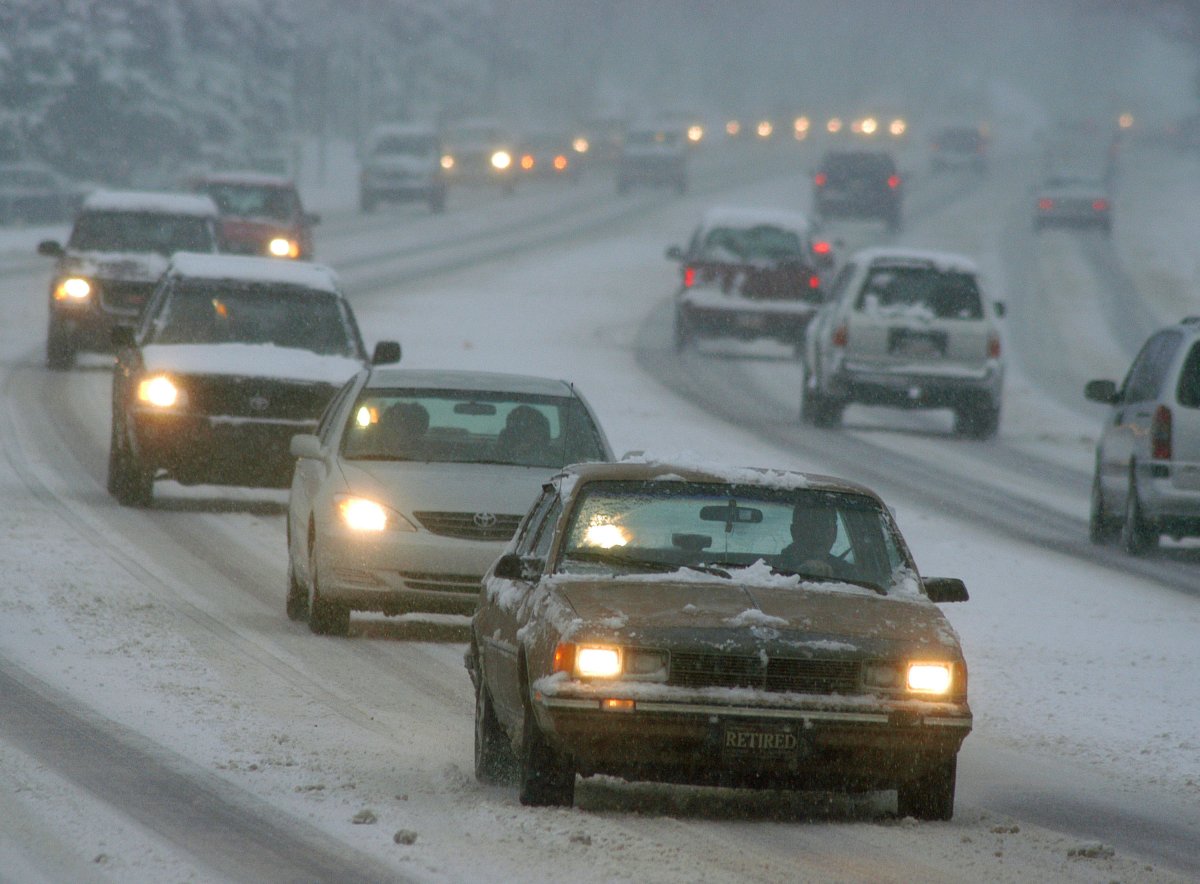As Metro Vancouver and Vancouver Island prepares for another dumping of snow, city crews are preparing the roads for the onslaught of drivers who will be trying to make their way around Friday morning.

READ MORE: Snowfall warning issued for Vancouver, Fraser Valley with 10 to 20 cm expected
But no matter how much plowing is done or how much salt is dropped, drivers should be ready to battle it out in tough conditions.
It’s no secret that even a few centimetres of snow causes traffic chaos across the Lower Mainland. On Monday, unprepared drivers struggled to manoeuvre hills and corners and snarled traffic across many major routes.
For many not used to driving in snow, it can be a daunting task. But for those not properly prepared for the slippery conditions, it can be worse. It can be downright dangerous.
Here are some top tips on how to drive in the snow:
- ‘Really happy’: Video captures B.C. orca calf eating first meal in 27 days
- In Oregon, debate continues after state’s 180 on drug decriminalization
- RCMP disputes claim of agreement over Surrey transition in leaked letter to solicitor general
- Family hopes B.C. teen’s devastating crash spurs motorcycle safety
- Make sure to have snow tires on your vehicle. These tires provide much better traction than summer or all-season tires and can keep your vehicle from skidding or sliding.
- Accelerate and brake slowly. Accelerating too fast can cause you to skid, as can jamming on your brakes. Expect stopping to take longer than normal.
- Give yourself extra time to get around. Speed limits are for ideal conditions, so it’s best to drive slower in the snow and ice. Also, expect more traffic than normal on major routes.
- Check what kind of brakes you have and learn how to use them. ABS brakes, or anti-lock brakes, mean that you can put firm and constant pressure on the brakes if you need to stop quickly. Feeling the pedal vibrate is normal in this case.
- If your car doesn’t have ABS brakes, gently pump the brake pedal repeatedly. Don’t attempt to steer if your wheels become locked. If you’re about to hit something, take your foot off the brake and try to steer around the object without using any gas.
- If you begin to skid, take your foot off the gas and steer in the direction you want to travel. Don’t overcompensate by steering too hard in the wrong direction. Don’t use the gas until you’re travelling in the right direction.
- When driving down a hill, avoid using the brake as much as possible. Try gearing down into second or third gear instead of braking.
- When approaching a hill, accelerate while approaching the hill to gain momentum. Try not to stop mid-hill unless traffic requires it. If you must start from a stop on a hill, gently apply the gas to prevent skidding.
- Give plenty of space between your vehicle and other cars. You might be a good driver – but they might not be!
- Stay at home. If you don’t have the proper tires or don’t have experience driving in the snow, stay home or find other ways of getting around. Many businesses can be accommodating to employees who can’t make it into work during a snow storm.
These tips were sourced from ICBC and AAA





Comments